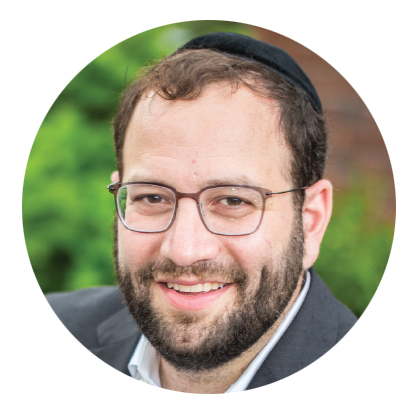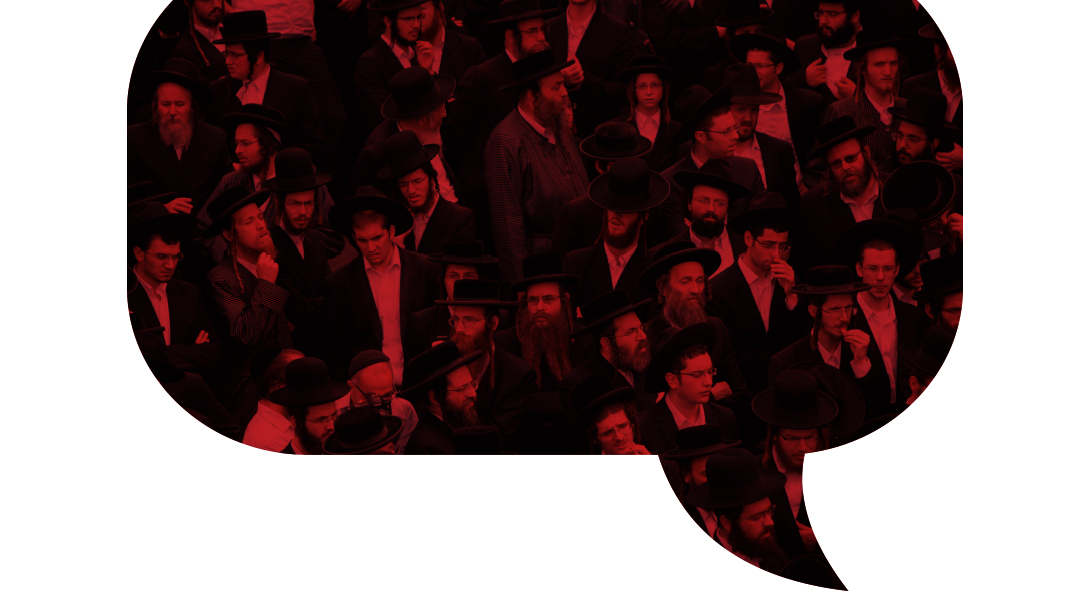Your Child’s Listening

The Baal Haggadah gives words, but you, dear father, have to give the words their feeling, and that’s what your child will remember
There is a fundamental difference between the way fathers read stories to their young children and the way that mothers do.
The father will hold the open book and read a few words on the page, then, reasoning that the child is not yet old enough to read, he might skip a line or two or seven. The father will quickly gloss over this omission by pointing to the picture and saying some vague words about it, like, “See the car? It’s a big car, right? It goes vroom vroom,” and then quickly turning the page, feeling virtuous and fatherly and utterly convinced that the child does not chap.
Mothers, on the other hand, will read the words on the page. Every word on every page. Even if the child’s eyes wander, and even if the child seems distracted, the mother will conscientiously push through, reasoning that the story itself will likely be better understood by stringing together the words the author chose to tell it.
Studies show that children develop trust issues later in life because of the way their fathers read them books. I should also mention that the data compiled for this study is based primarily on personal fathering experience and the guilty expression on the faces of several friends I shared the he’arah with.
And yet it is the father charged with telling what is, without a doubt, the most important story of the year! How is that meant to work?
First-time Seder-makers are always nervous about this. What will I say? I’m not the storyteller type! I don’t know how to be dramatic/entertaining/exciting! How will I hold their attention?
To add to the challenge, we’ve now changed the way stories are told, the entertainment and literature industry conspiring to eradicate the role played by imagination.
Even the most classic stories, ones that included drama, excitement, and suspense, have morphed into comics, our children more likely to read about gedolei Yisrael, Jewish history, or proper middos if the page is a sensory overload of image, action, and color.
Go to a convention, conference, or seminar, and see, as the presenter speaks, how the details, places, and figures he mentions appear on a large screen behind him in real time. At concerts, when the performer sings about Yerushalayim, the burnished gold stones of the Holy City suddenly appear, and when his song is one of tefillah, swaying bodies and gently rippling talleisim fill the screen.
Even the inspiration industry is not spared: The very effective, very impactful Vayimaen videos imbue a new generation with confidence and strength to stand proud and pure by using tools of a new generation, a steady stream of images and footage designed to make sure viewers know what the speaker means when he says the word “airport,” “Kosel,” or “the Chofetz Chaim.” This is crucial for the zero percent of viewers who have never been in an airport, or seen a picture of the Kosel or the Chofetz Chaim.
But at the Seder, you’re on your own, so what’s the plan?
Perhaps that gufa's the plan. Perhaps this is the secret of the Haggadah, of yourself, of the Leil Seder, and the magic of how they come together.
You can’t transmit something you don’t feel from the very core of your being.
The songs, the stories, the creativity… all of it necessary to inspire a family, for sure — all year long. Not tonight, though. This night, you just have to dig deep and pull out that one single truth, the one idea that allows you to sleep easy at night, the answer that is strong enough to answer any question.
The Baal Haggadah gives words, but you, dear father, have to give the words their feeling, and that’s what your child will remember.
In an AI world, we call forth the most non-artificial sort of intelligence possible.
Take a minute. Contemplate what would happen if, chas v’shalom, a Jew was forced to choose between his religion and his life — any Jew, at any time. Then imagine that Jew was given one minute to explain his decision to his child — what would he say?
Hear him say it… and then you say it too, in comfort and safety, b’ezras Hashem, but with the same clarity.
Those in the publishing world know that Haggados sell well — somehow, even though no Jewish home has a Haggadah shortage, people buy new ones year after year. If the story didn’t change and the text is the same, what’s pulling you to buy a new Haggadah?
Maybe it’s the sense that even though it’s the oldest story in the world, still, it’s always new. The narrative doesn’t change, but each generation sees it play out differently, and the chiddush of each Pesach is the contemporary application of the ancient truth.
The themes of the Haggadah are today’s reality, and 3,300 years after the Ribbono shel Olam placed His confidence in us, the deal is still on.
Look around, anywhere, on any day, and you’ll see it. Study it for a minute, bottle that up, and get ready. Even if you’re a father who’s guilty of story-telling misdemeanors during the year, and even if you’re a father who sometimes falls asleep when you’re meant to be putting the child to sleep, misunderstanding the practical implications of the word bedtime, on this night, it is different.
On Leil HaSeder, it’s not just the story that’s different, but the storyteller too.
(Originally featured in Mishpacha, Issue 1057)
Oops! We could not locate your form.


